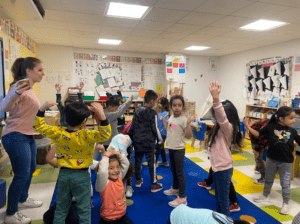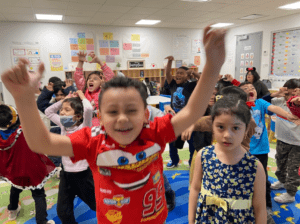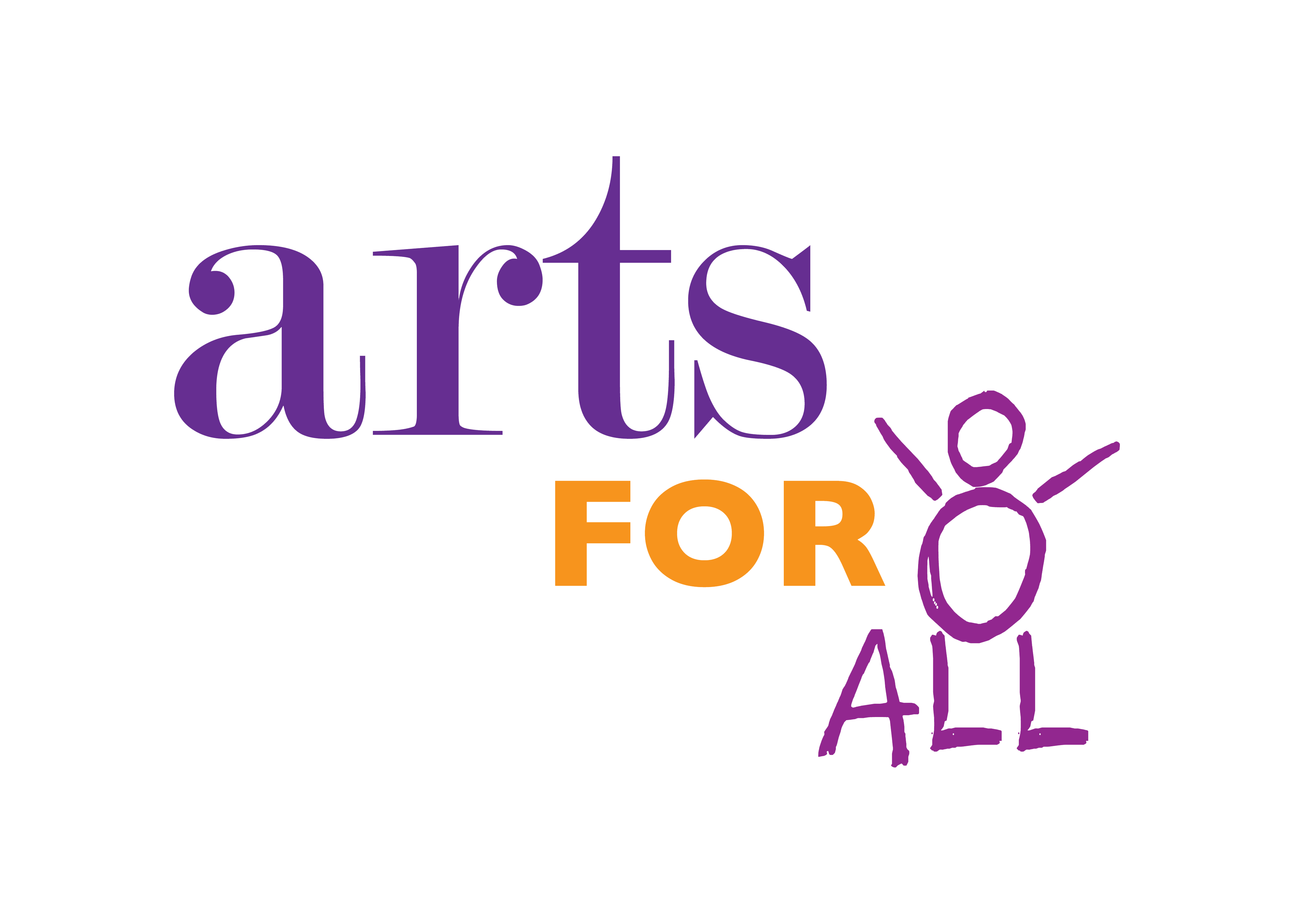Written by AFA Spring 2023 Intern Melody Fay Browning
March 9th, 2023

Photo By Melody Fay Browning
On Thursday, March 9th I had the pleasure of joining teaching artist Elise Connolly for several kindergarten classes at Rennaissance Charter School 2 in Elmhurst. Elise started out her classes by calling all the students to the rug and playing a game of “Beat Boss” where we tapped and moved different parts of our bodies to the beat of the song playing. Next, Elise lead a game of freeze dance with a twist. We moved like we were dancing through cookie dough and froze like cookie cutters, then moved like we were in tall grass and froze like a flower, as well as more prompts. Then Elise read through the book “I Am Going to be a Dancer,” and the class discussed and pointed out character traits they noticed in the multiple characters from the book, then talked about what they wanted to be when they grow up. After sharing, students were called on to share their favorite parts of the book and the whole group acted it out by creating tableaus of the characters on the page. Next, we played dance bingo, where students picked a dance move related to the bingo squares to create a sequence of movements. To close out, Elsie called on a student to lead a quick breathing exercise where we follow the arc of a rainbow on a page as we breathe in and out. I had a great time joining Elise, and it was really fun to participate in such high-energy activities where the children were all so engaged and excited.
Teaching Artist Elise Connolly Interview Part 1:
Q: What factors do you think about when developing your lesson plans?
Elise: I think about length of time, including a variety of activities that are associated with the text, are the activities too high focus and if so, how can I modify, and does the text connect with any holiday or current theme ie Black History Month, Hispanic Heritage Month, Spring, etc. I also factor in cultural representation — started the year with a book on Celia Cruz, we’ve done a book with sign language, etc. I also consider comprehension questions associated with the reading testing they do. RSC does F&P reading tests so I try and incorporate similar comprehension questions to help them practice.
Q: How do you navigate classrooms with children that are at different levels of learning and skill?
Elise: I plan for as many modifications as possible. I sometimes catch myself saying some bigger words than they know but figure out a way to explain or describe. If I can, include things with pictures. We did an emotions game where I had a chart with pictures of faces showing different emotions.
Q: What do you hope children in your classes take away from your lessons?
Elise: I hope they take away something new they’ve learned — it may not be evident immediately but sometimes they come in repeating things from previous weeks which is great. I hope they make some real world or content connections. Most of all I hope they find the lesson fun and joyful.
March 23rd, 2023

Photo By Melody Fay Browning
On Thursday, March 23rd I had the joy of joining teaching artist Elise Connolly for several kindergarten classes at RCS 2. To warmup, Elise started the class by playing “Beat Boss,” a game where we follow Elise to move our bodies to the beat of the song. Next, Elise lead the class in a game called family portraits where the class is given a family prompt, for example a family of aliens or a family of musicians, and then they have five seconds to arrange themselves as different members of the family before their picture is taken. After this, Elise invited me to read the class their book for today called “Love Monster and the Last Chocolate.” The class had a lot of fun interacting with this story and I had a great time reading it and asking the class for their thoughts about it. Next, Elise played a game where she acted as the monster and the class gave her advice about how she should handle the dilemma proposed in the book about whether or not the monster should share the chocolates. To finish out the class, some of the children shared their favorite parts of the book and the whole class acted those parts out to create tableaus of the scene. I had a great time joining Elise today because the activities she prepared were all full of energy and very engaging, and the classes were all ready to play and have fun with them but were also very thoughtful and creative in the way they answer questions and interacted with the activities.
Teaching Artist Elise Connolly Interview Part 2:
Q: Have you ever been in a situation where, based on the energy or focus level of the room, you had to pivot your lesson plan? And how did you navigate that?
Elise: The thing I can recall the most recently was there was a day where the last class that you’ve come to observe with me on had just come back from a field trip, and when I walked into the classroom, they were all sitting down to have snack and they were very calm. And instead of my original plan, I read the whole book and then I said, why don’t we do the art activity as the whole class so they could stay seated? So, I just read the book out loud to them. I didn’t do a warmup with them. I didn’t really ask them any questions. And then instead of doing the physical activity that I had planned with them we just did the art activity that I had planned for half the class, with all of them. With pivoting, there’s a couple things. But most importantly, over planning. Sometimes I feel like I have one activity planned, I might also plan a second one or come up with an idea of one, just to have it in my back pocket.
Q: I noticed the kids in your classes really respond to the physical and movement-based activities you introduce. Why do you think movement is important for kindergarten aged kids?
Elise: I think it’s important for them because, at that age, and honestly, kids of any age, but really at that age, they’ve got to move, and they have the energy to move. However long they get at recess is not enough time for them to get all that energy out. They sit a lot during the school day. It’s important to engage them with movement because it’s different for them since they don’t get that every day.
Q: I really liked how you used the word joyful in your answer to one of my previous questions when I asked what you hope children take away from your lessons. I’ve always found theatre joyful and thought it was so important that children participating in the arts can experience joy. How do you prioritize joy during your lessons?
Elise: I hope that everything that I do in my lessons is joyful. I hope that nothing that I plan comes across as serious. It’s just planning things that are going to be fun and joyful. That doesn’t mean that there aren’t going to be moments where kids have a rough day and have outside factors that cause them to be upset. I also think that you kind of hit it on the head with theatre is already just a joyful activity or event, or it can be. I think if we were doing an upper school class and we were doing activities that were associated with a drama, I think it would a little bit more careful planning on my part with trying to have those heavy conversations, but then also pivot really quickly at some point to have a release. I think it just kind of starts with, everything that we’re going to do is going to be fun, and it’s easier with that age group to do it that way.
